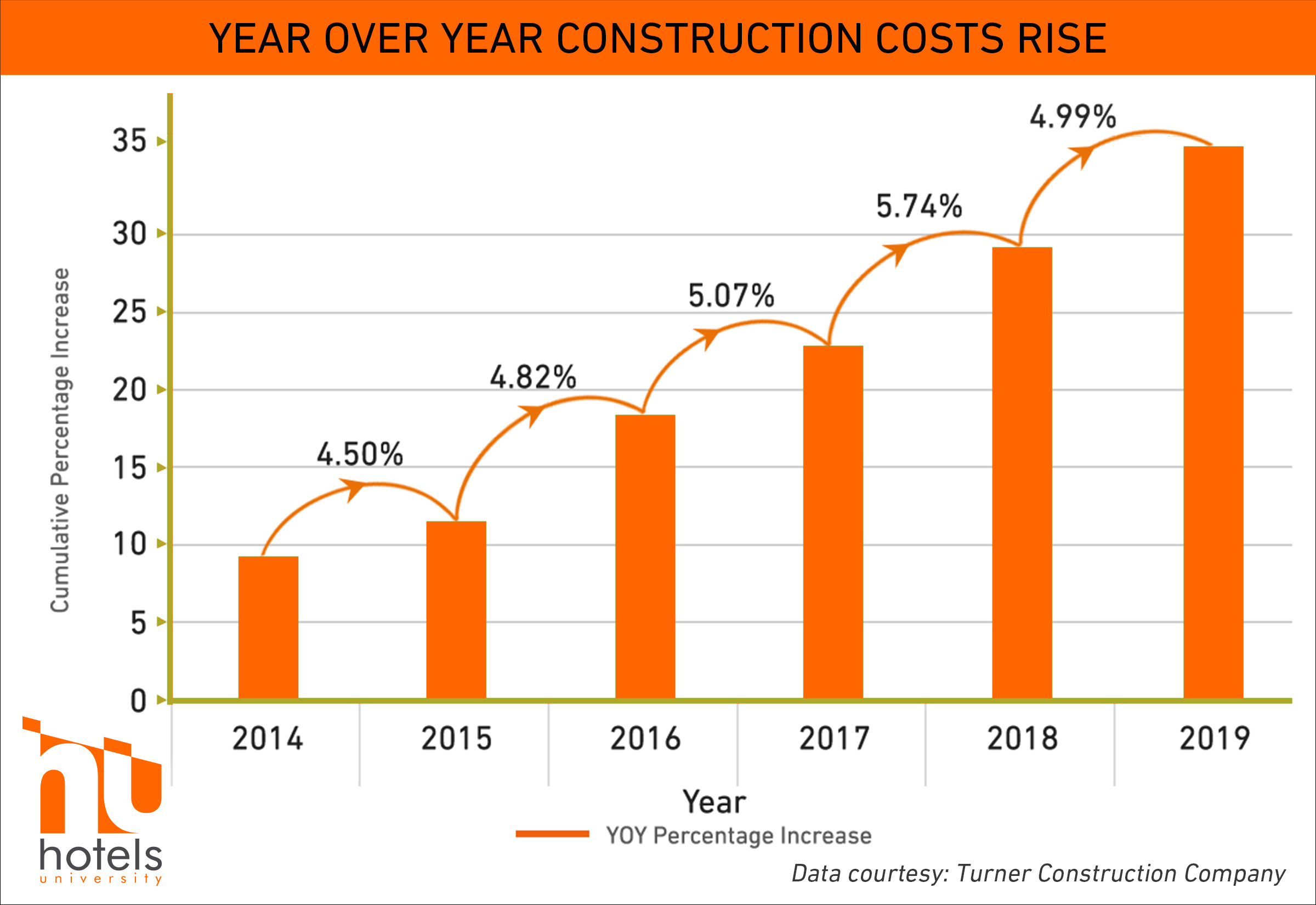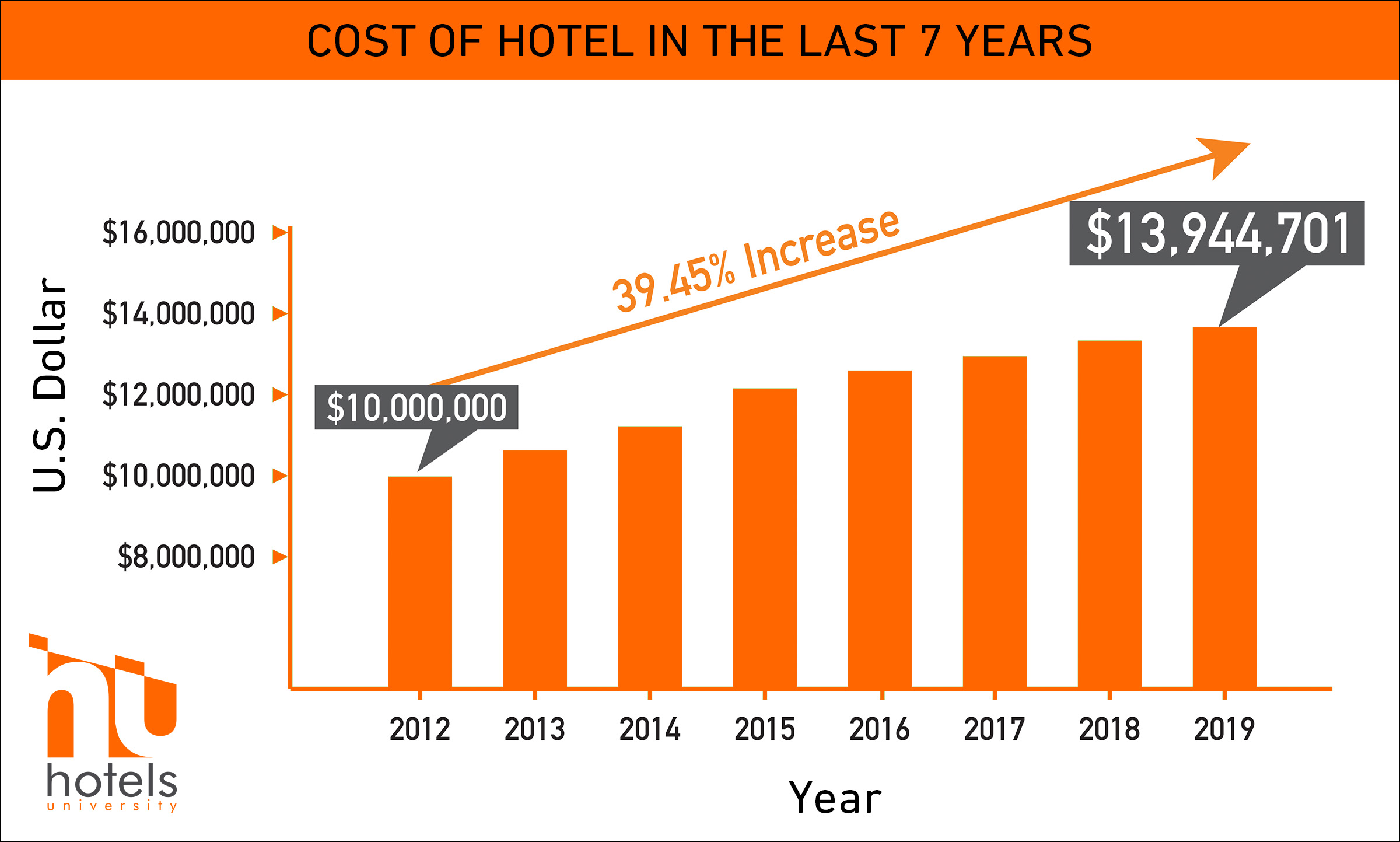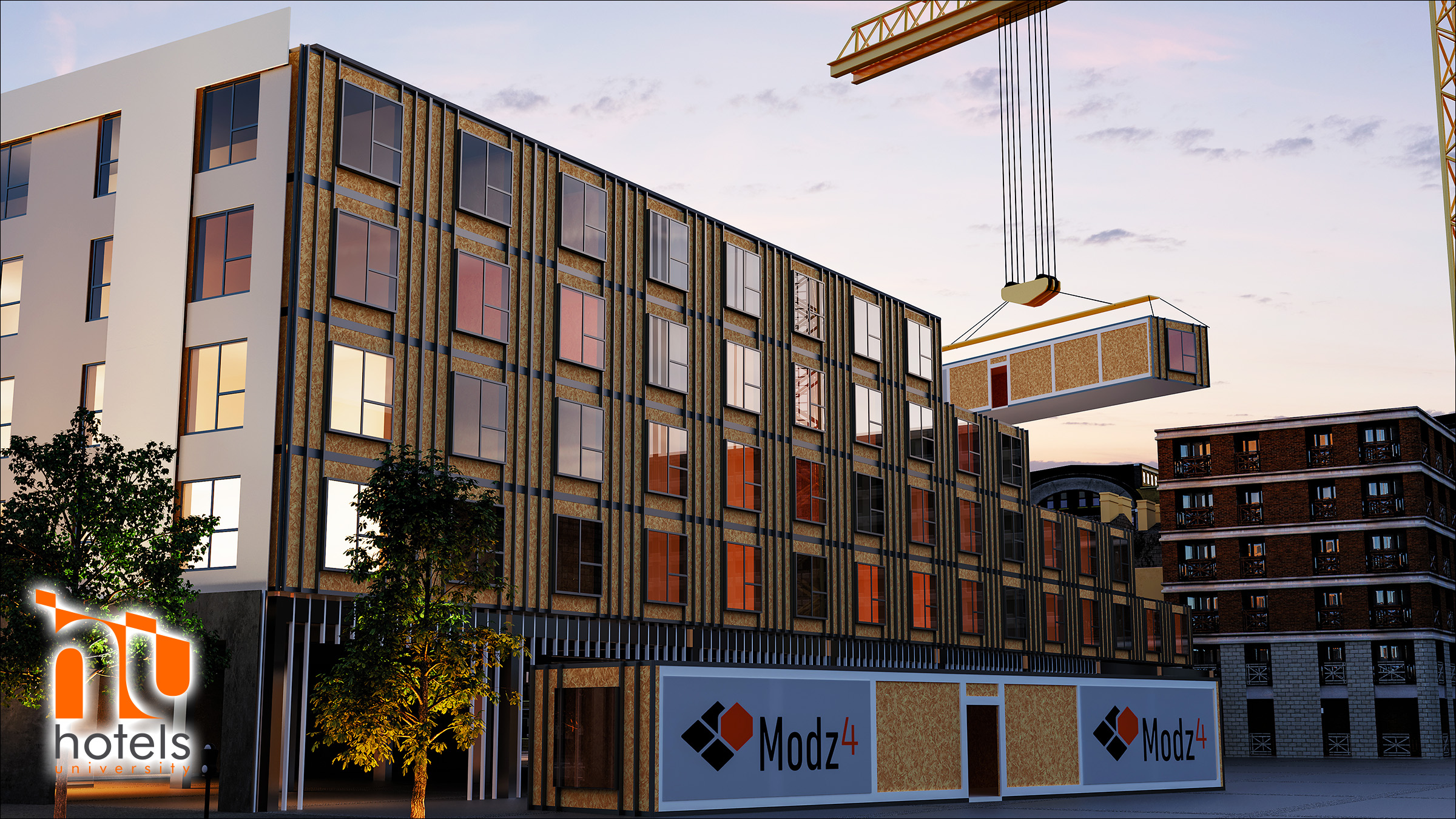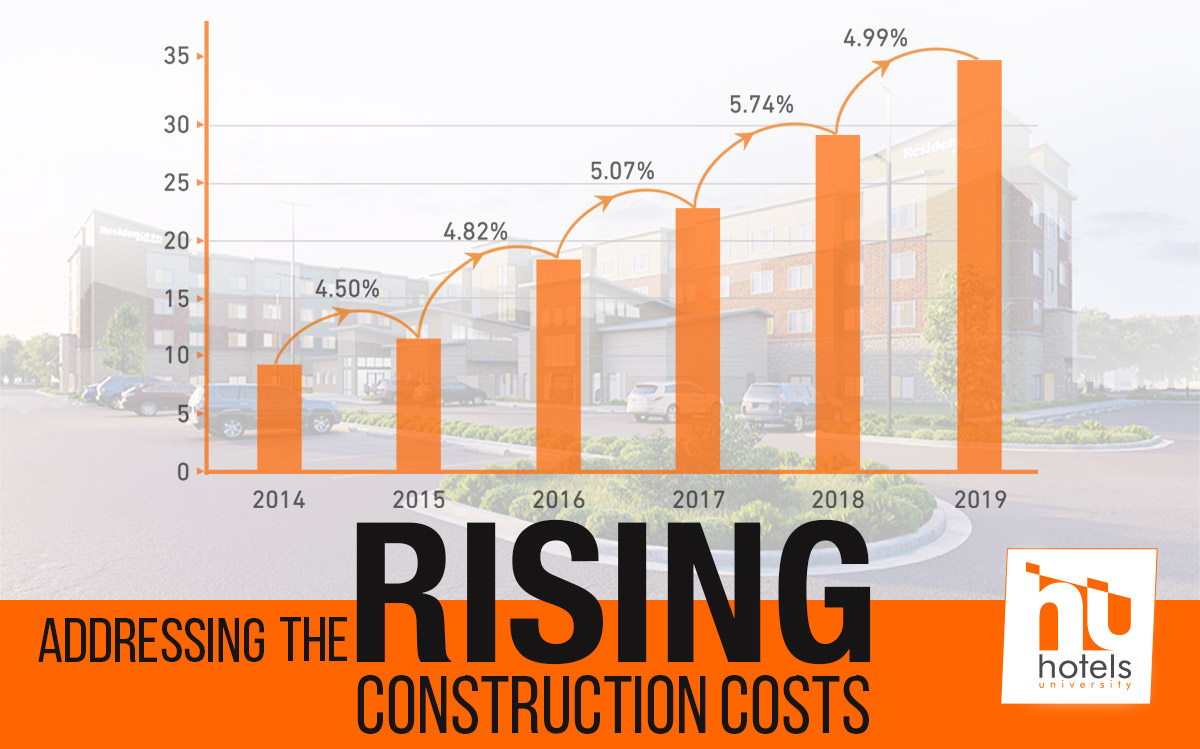Construction costs have increased by nearly 5% each year for the last 5 years—a nearly 40% cumulative increase!! This trend most likely will continue to climb in 2020. So, how can developers keep construction costs in check?
In this article, we’ll explore the contributing factors to rising construction costs and good practices for developers to navigate through the current economic landscape.

![]()
Contents:
![]()
The Current Scenario
In 2018 alone, the cost of construction rose an eye-popping 5.7%. 1 It’s no news that construction prices are skyrocketing. While there is some variance depending on your geographic location and project scope, the story is similar everywhere.
Let’s talk about hotels. Calculating from the data in Graph 1 above, consider a basic $10M hotel from the end of 2012—compared to now, that same hotel would cost 39.45% more to build in around 7 years.
There has also been a significant increase in costs for financing and hotel FF&E. Extended financing terms elongate the path to revenue and exasperate the situation.

Longer schedules are also liable for increased construction costs, which often happens for many reasons like shortage of capital, materials, and labor.
“A decade ago, a three-story wood-frame hotel would take about 12 months to construct, but now the average is around 22 months, and closer to 30 in the Bay Area,” shared Marriott Chief Development Officer Eric Jacobs, who also suggests a national construction labor shortage, which is especially prominent in California.
What Developers Can Do
Increasingly advanced technology has the potential to reduce costs. Pairing technology with experienced designers and contractors can generate substantial results.
Putting the Value in Value Engineering
- Value engineering (VE) helps to achieve all essential functions at the lowest project life-cycle cost while staying consistent with required performance, reliability, and safety.
- VE helps you identify innovative options and new approaches.
Going Modular
- Modular construction delivers quality buildings in a shortened construction timeframe—helping developers open the hotel for business sooner and thus, generate added revenue. Get all your questions answered in my earlier modular series here.

Exploring Space-Saving Avenues
- Every square foot costs money.
- Ask your designer to create optimum spaces, procure space-smart FF&E (e.g., foldable, multipurpose furniture), and remove unnecessary areas from the hotel plan. (Your stairs & exits placement can be a factor here.)
Implementing Building Information Modelling (BIM)
- Right usage of BIM can smoothen and fast-track interdisciplinary coordination among all project stakeholders—resulting in fewer errors and possibly faster approvals. BIM works well with modular construction, too.
- BIM can also reflect the cost and material differences caused by each scope shift. This level of integration can help streamline the construction process—thus, reducing the waste and time that might result from the change.
Ensuring a Strong Design/Build Relationship
- To combat cost challenges, developers, designers, and contractors need to work together.
- Make sure your designer is skilled to carry out your lean vision and that your contractor has a good relationship with subcontractors to minimize negative impacts of the labor shortage.
Offsetting Expenses by Choosing Smartly
- Going for energy-efficient systems and building materials goes a long way toward reducing utility costs and minimizing the hotel’s demand on the power grid.
- High-efficiency climate control units and good insulation work together to keep guests comfortable without breaking the bank. Smart hotels are slowly gaining in popularity, too.
Our experts from each design discipline help you efficiently develop your projects. Feel free to reply to this email or please fill out this form and we’ll get back to you by next business day.
Thank you,
Blair Hildahl
Base4 Principal
608.304.5228
Blair@hotelsuniversity.com
![]()
Sources:
• https://www.turnerconstruction.com/
• https://s28259.pcdn.co/wp-content/uploads/2019/04/Q1-2019-QCR.pdf
• https://www.hotelmanagement.net/construction/owners-look-to-make-sense-modular-construction
• http://hospitalitytrendz.com/creative-solutions-to-tackle-rising-construction-costs/





Leave A Comment